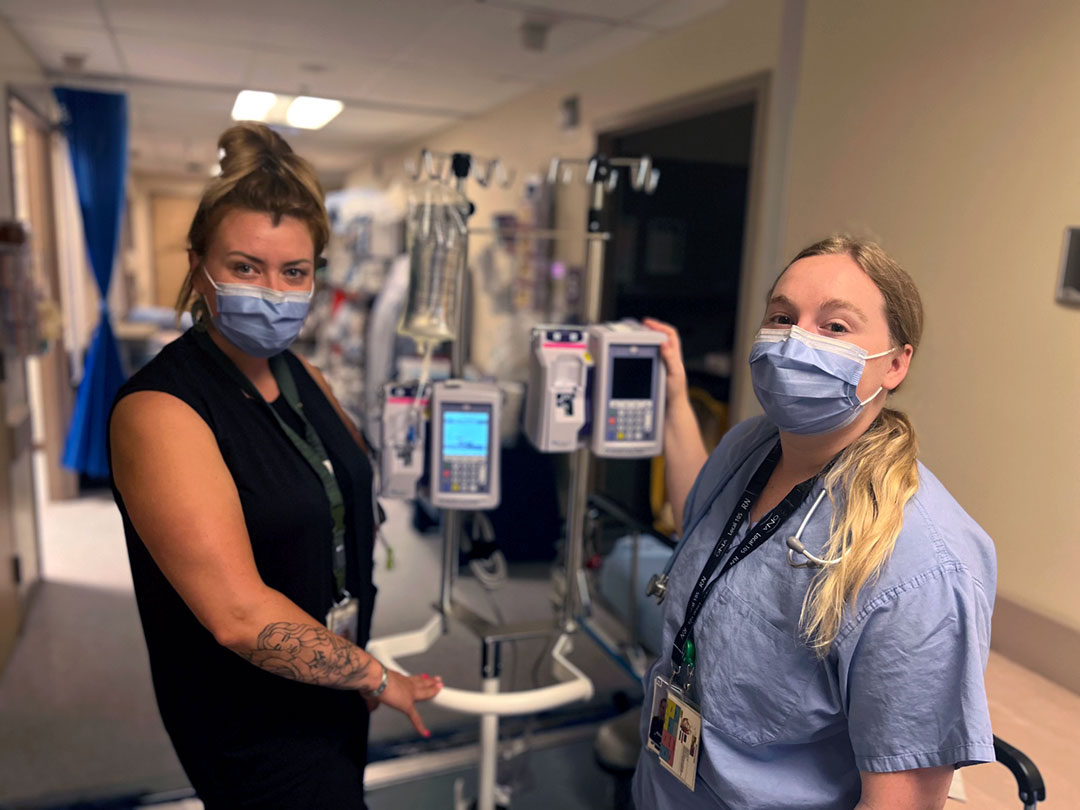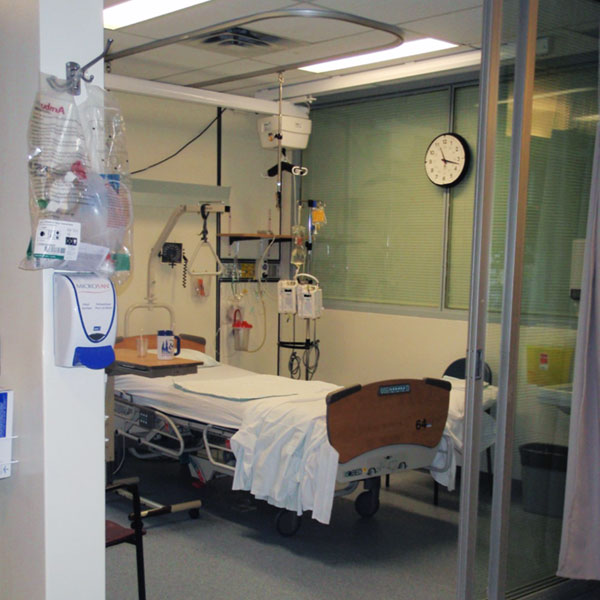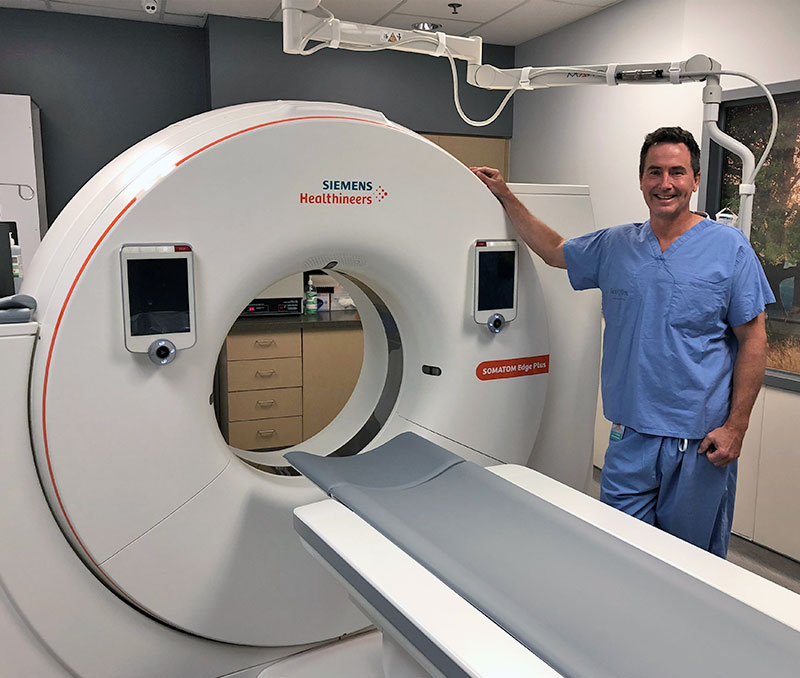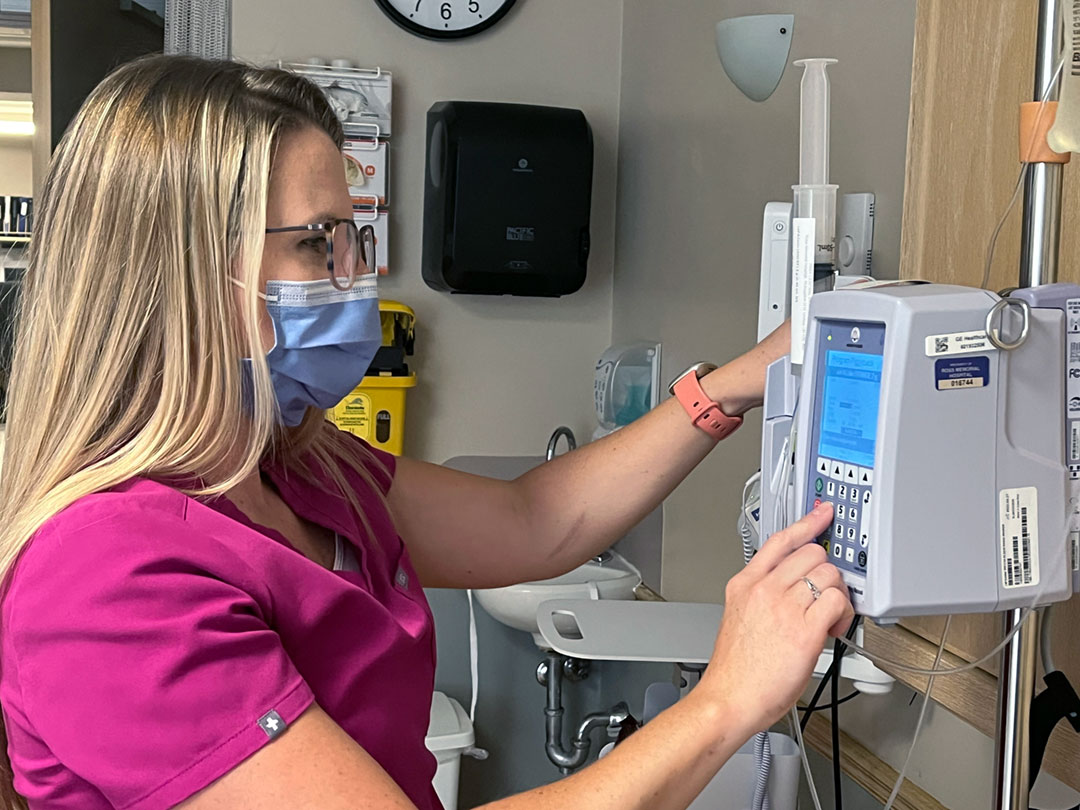Urgent Priorities
Growing Critical Care Services and Spaces
The population of the City of Kawartha Lakes is growing rapidly. The expansion of our critical care services is one of our highest priorities.
Expanding and Modernizing our Emergency Department

The need for emergency services at the Ross are projected to increase by 30% over the next 20 years as our population grows. The Ministry of Health has approved plans to expand and modernize the community’s Emergency Department (ED), including
- the creation of a Mental Health Emergency Services Unit (MHESU) within the ED:
- providing a safe space with private rooms for crisis care, as well as a private waiting room;
- with a dedicated team of care providers available 24/7 to ensure the safest treatment for patients awaiting admission, transfer, or discharge home;
- optimizing the safety and security of staff and patients, and supporting the projected 44% increase in patients requiring crisis intervention in the ED.
- a new, contemporary ED Trauma Room equipped with Airborne Isolation Capacity:
- providing space for everyone on the ED team required to give life-saving care to a trauma patient whose condition requires extra safety precautions;
- Ensuring advanced Infection Prevention and Control precautions to protect patients and care providers from the spread of infections in the hospital.

Modernizing our Intensive Care Unit
Our community’s ICU is a designated Level 3 program and provides critical care medicine, intensive monitoring and treatment, ventilator and respiratory support, and post-surgical care. Renovations planned for our community’s ICU include:
- Contemporary Spaces for the Best Care Possible
- renovating undersized patient spaces to fit advanced bedside equipment and technology;
- increasing the number of ICU beds to 15 from 10 to better meet our community’s evolving critical care needs;
- adding airborne isolation capacity available to the ICU and Medical Unit, with HEPA filtering, negative air pressure and separate venting, ensuring safer care patients with illnesses including C.difficile, MRSA, Tuberculosis and COVID-19.
Improving Patient Care and Outcomes
Leading-edge diagnostic imaging is a critical component of how doctors plan our patients’ safest path forward. State-of-the-art bedside equipment ensures life-saving care. These tools are not covered by government funding.
Donors are partners in precision care.

Healthcare providers depend on precision imaging to safely diagnose and treat patients close to home. Our Diagnostic Imaging department conducts 75,000 exams each year, and demand continues to grow.
Ensuring our patients have timely access to this advanced technology gives them their best chance for a good outcome.
Two of our Hospital’s highest priority investments have already arrived and are being put to good use:
- The community’s new CT Scanner is considered the gold standard tool to diagnose disease and injuries, to provide precise direction for surgeries, and to guide cancer treatments.
- With dual energy capability, the new CT is more advanced, producing higher quality images and more accurate data in less time and with a lower dose of radiation.
- The new CT is safer for young patients and patients with cancer who require regular scans to see how treatments are working.
- Advanced technology broadens the range of patients who qualify for Cardiac CT Angiography, reducing the need for patients with complex conditions to travel for scans in other hospitals.
- The community’s new MRI ensures our patients have access to the best diagnostic technology for imaging soft tissues:
- MRI is key to diagnosing such conditions as Multiple Sclerosis, aneurysms, tumours, spinal cord injuries, joints, herniated discs, lesions and hearing loss.
- Thanks to advances in MRI science, the MRI can adjust to each patient, which means they are in position sooner.
- High-tech sensors in the table monitor the patients’ breathing and adjusts for patients who have difficulty holding their breath for certain tests, such as liver and abdomen imaging.
To me, it’s vitally important that we keep up-to-date with available technology, so that the incredible staff at RMH can be retained and continue to do their jobs to the best of their ability, and to allow for the best possible outcomes for local patients like me – now living post-cancer and so grateful for everyone at the Ross.
Kate Winn
Grateful MRI Patient
Transforming the Patient Experience
This campaign is about saving lives. This is about raising funds to pay for the medical technology and equipment that the hospital team needs to diagnose and treat patients.
The latest medical advancements. Right here — where we live.

As the hospital needs to implement advancements in medical science, we count on our generous community to help fund equipment, technology and capital projects that are not covered through government funding.
It takes everyone to keep our hospital functioning at the highest level possible.
- Investments including Ross Memorial’s new Clinical Information System are transforming the patient experience and and connecting real time test results and patient information… making it available to every care provider – and to you – when and where it’s needed.
- The CIS consolidates patient and hospital records into one streamlined central resource, transforming the flow of information and enabling a full and complete chart to ‘travel with’ the patient.
- Everyone who interacts with a patient now has an “up-to-the-minute” picture. Medical images go right into the patient chart. Doses of medications administered through an IV pump are right there. Dictation is automatically converted to text. And the total confidential patient history and treatment plan is accessible to clinicians in real time. With the CIS, every healthcare provider can see every aspect of the healthcare history, without the need for patients to remember or repeat details.
The Ross evolves at the heart of a community ‘web of care’ that is faster, safer, better connected, and in which everyone becomes a partner in care. The CIS incorporates best practices and advances in medicine with alerts and early warning systems. It is the largest clinical transformational project in Ross Memorial’s history.
The CIS is also our central information connector. Data from biomedical devices are now automatically integrated into patients’ records. These critical connections include:
- Anaesthesia devices
- Critical care and emergency hemodynamic monitors and ventilators
- Dialysis machines
- Vital signs monitoring
- ECG machines
- Lab instruments
- Diagnostic Imaging modalities
- Cardiology modalities
We don’t always know when we’ll need the hospital. Together, we can ensure the best medical equipment and facilities are available when those moments arrive.



